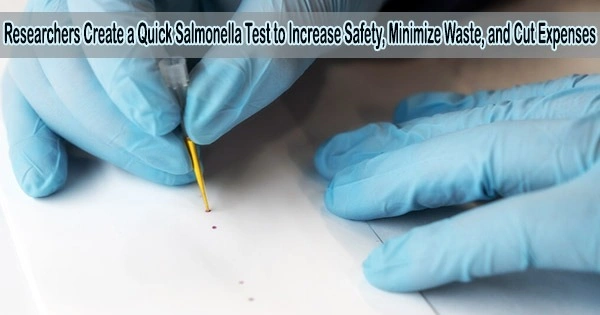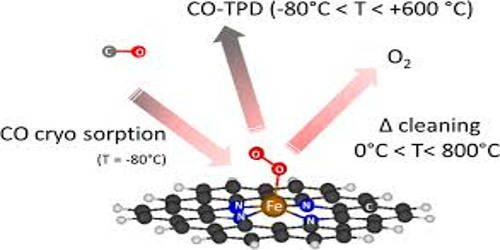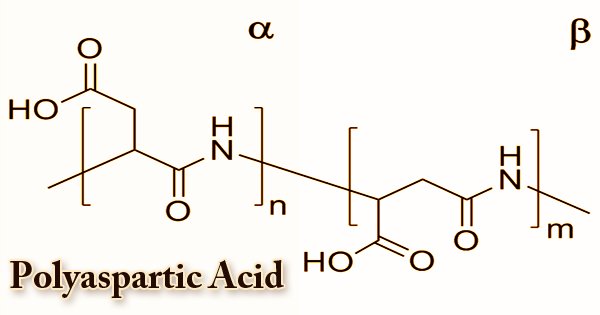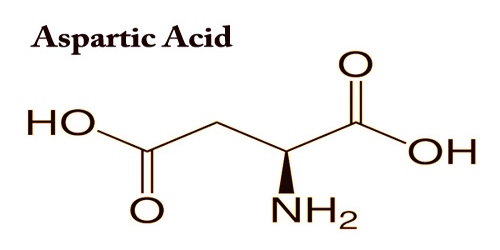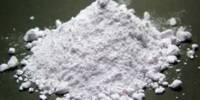McMaster University researchers have devised a quick and low-cost test for Salmonella infection in chicken and other foods that is easier to use than a home COVID test.
The test, described in a new study published in the journal Angewandte Chemie International Edition, has the potential to improve food safety, reduce the cost of processing fresh poultry and other commodities, and limit large-scale recalls to batches that have been explicitly identified as contaminated.
In comparison to current lab culture monitoring, which takes at least a full day to generate data, the researchers demonstrated that the test produces reliable results in an hour or less without the need for attachments or a power source.
Once scaled up and commercially available, the new test might be a huge help to poultry processors, who are concerned about Salmonella infection. The test would also be important in guaranteeing the safe processing of other Salmonella-prone goods, such as eggs, dairy products, and ground beef.
Tens of thousands of Salmonella lab tests are performed each year by a single big poultry processor. Reducing or eliminating the need for overnight lab cultures would save money while also making it easier to detect contamination early in the process.
“Anyone can use it right in the setting where food is being prepared, processed or sold,” says co-author Yingfu Li, a professor of Biochemistry and Chemical Biology who leads McMaster’s Functional Nucleic Acids Research Group. “There’s a balance between cost, convenience and need. If it’s cheap, reliable and easy, why not use it?”
Salmonella is one of the most common and deadliest types of food-borne infection, accounting for 155,000 deaths worldwide each year. Salmonella protection is a significant responsibility for food makers, retailers, and regulators alike.
This is very important to us in the development of our food-testing program. Being able to create a test that is both easy to use and which produces a readily visible color within an hour is significant.
Tohid Didar
The test is made possible by a new synthetic nucleic acid molecule produced at McMaster. The molecule is sandwiched between small particles such as gold for the test.
The test platform lines the inside of a pipette tip and activates when a liquid sample of the item being tested is drawn into the tube.
Salmonella bacteria present in the environment sliced through the particles, allowing the chemical to escape.
The test platform lines the inside of a pipette tip and activates when a liquid sample of the item being tested is drawn into the tube.
Salmonella bacteria present in the environment sliced through the particles, allowing the chemical to escape.
“Using these tests is easier than using a COVID test, which so many people are already doing,” says co-author Carlos Filipe, chair of McMaster’s Department of Chemical Engineering. “For this to be as effective and useful as possible, it has to be easy to use.”
The new technology has been developed with support from the non-profit research organization Mitacs, and Toyota Tsusho Canada Inc., an indirect subsidiary of Toyota Tsusho Corporation in Japan, which plans to develop the innovation for commercial use.
The study is part of a larger effort to establish McMaster and its Global Nexus for Pandemics and Biological Threats as a center for the development of real-time sensors, pathogen-repellent materials, and other food safety technologies.
“This is very important to us in the development of our food-testing program,” says co-author Tohid Didar, an associate professor of Mechanical Engineering and Canada Research Chair in Nano-biomaterials. “Being able to create a test that is both easy to use and which produces a readily visible color within an hour is significant.”
Li, Didar and Filipe authored the paper with postdoctoral research fellow Jiuxing Li, Ph.D. student and Vanier Scholar Shadman Khan, and research associate Jimmy Gu.
Reducing illness and food waste aligns with Toyota Tsusho Canada’s values, explained Toyota Tsusho Canada Inc. President Grant Town.
“Our goal is to help bring proven research from the lab to the marketplace, where it can benefit society,” Town says. “Reducing the risk of illness while also cutting food waste will benefit everyone, and Toyota Tsusho Canada sees this as a great opportunity.”
